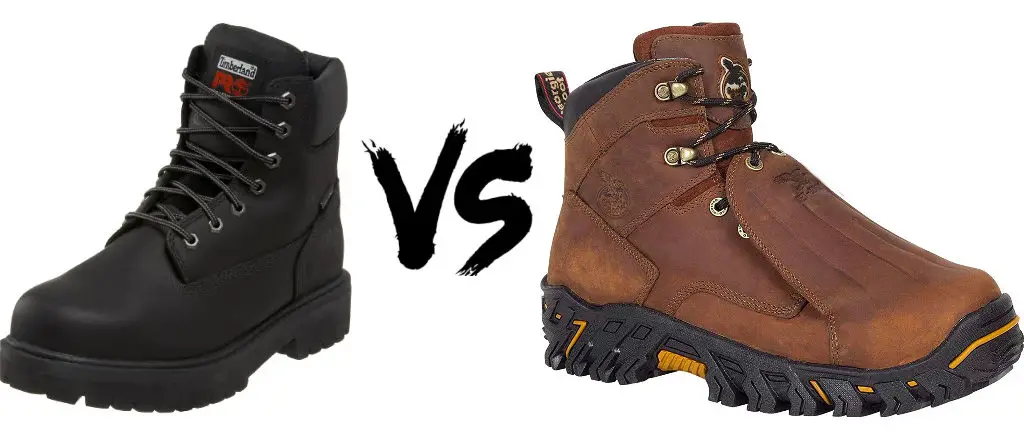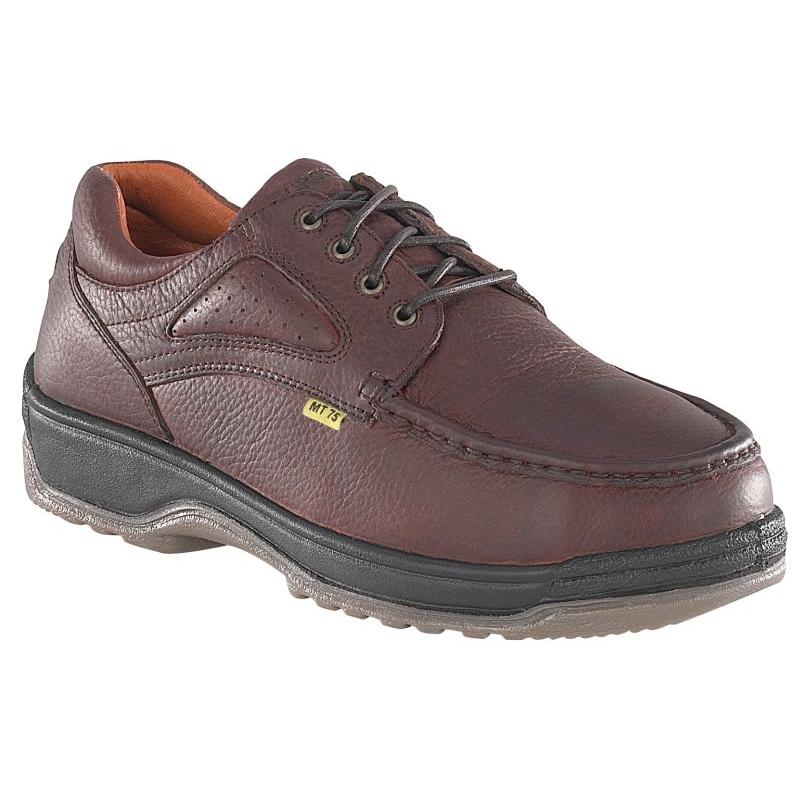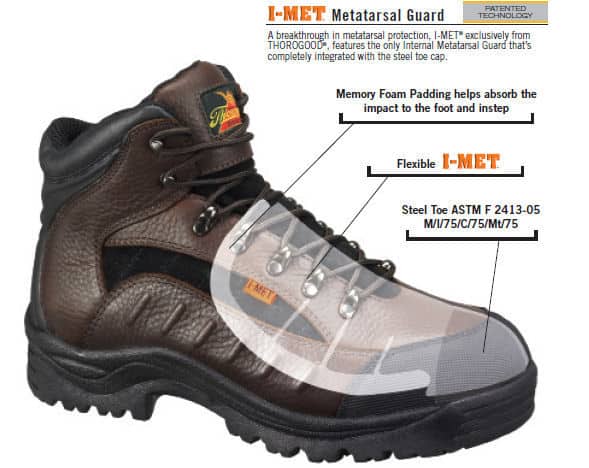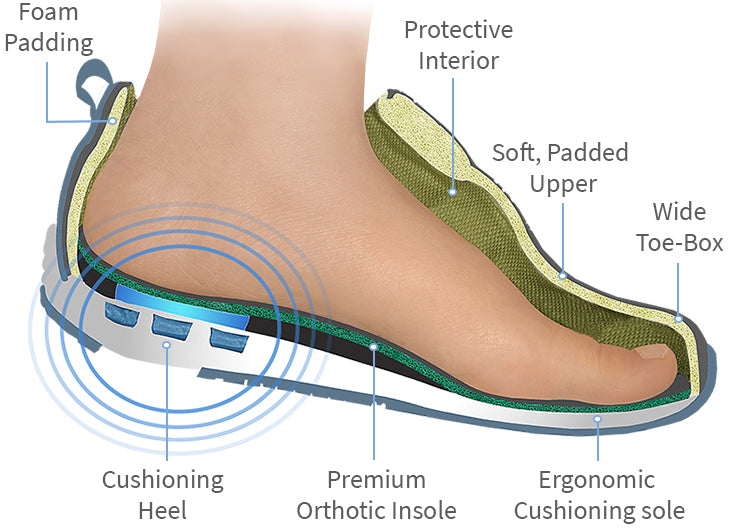Why Safety Shoes Matter in the Workplace
In hazardous work environments, the risk of foot injuries is a constant concern. According to the Occupational Safety and Health Administration (OSHA), over 100,000 foot injuries occur annually in the United States alone. These injuries can be severe, resulting in amputations, fractures, and even fatalities. The importance of wearing safety shoes, such as steel toe and metatarsal shoes, in these environments cannot be overstated. By wearing the right safety shoes, workers can significantly reduce their risk of injury and ensure a safe working environment. In fact, OSHA requires employers to provide personal protective equipment (PPE), including safety shoes, to employees working in hazardous conditions. By prioritizing foot safety, employers can prevent injuries, reduce workers’ compensation claims, and maintain a productive workforce.
Understanding Steel Toe and Metatarsal Protection
When it comes to protective footwear, understanding the difference between steel toe and metatarsal protection is crucial. Steel toe protection refers to the reinforcement of the toe area with a steel cap, which provides protection against crushing and puncture hazards. This type of protection is essential in industries such as construction, manufacturing, and warehousing, where heavy objects may fall or roll onto the feet. On the other hand, metatarsal protection extends beyond the toe area, providing additional protection to the metatarsal bones in the foot. This type of protection is often required in industries such as logging, landscaping, and heavy construction, where the risk of foot injuries is higher. Steel toe and metatarsal shoes are designed to provide a comprehensive layer of protection against various hazards, including heavy objects, sharp edges, and hot surfaces. By understanding the specific protection needs of their job, workers can choose the right steel toe and metatarsal shoes to ensure a safe working environment.
How to Choose the Best Steel Toe and Metatarsal Shoes for Your Job
Selecting the right steel toe and metatarsal shoes for your job can be a daunting task, especially with the numerous options available in the market. However, by considering a few key factors, you can make an informed decision that ensures your feet are protected and comfortable throughout the workday. First and foremost, it’s essential to understand the specific hazards present in your workplace and the level of protection required. For instance, if you work in a construction site, you may need shoes with a higher level of impact resistance. Next, consider your personal comfort preferences, such as the width and depth of the toe box, the cushioning and support, and the breathability of the materials. Additionally, set a budget and stick to it, as steel toe and metatarsal shoes can range from affordable to very expensive. Finally, look for certifications such as ASTM and ANSI, which ensure that the shoes meet specific safety standards. By taking these factors into account, you can choose the best steel toe and metatarsal shoes for your job, providing you with the protection and comfort you need to perform at your best.
Top-Rated Steel Toe and Metatarsal Shoes for Different Industries
When it comes to selecting the right steel toe and metatarsal shoes for your job, it’s essential to consider the specific requirements of your industry. Here, we’ll review and compare top-rated steel toe and metatarsal shoes for various industries, highlighting their features and benefits. In the construction industry, shoes like the Timberland PRO Boondock feature a rugged outsole and a breathable mesh lining, providing excellent protection and comfort on the job site. For manufacturing and warehousing, shoes like the Dr. Martens Ironbridge offer a slip-resistant sole and a comfortable, cushioned insole, making them ideal for workers who spend long hours on their feet. In the oil and gas industry, shoes like the Thorogood American Made feature a rugged, oil-resistant outsole and a protective steel toe, providing excellent protection in hazardous environments. By choosing the right steel toe and metatarsal shoes for your industry, you can ensure a safe and comfortable working environment. Whether you’re working in construction, manufacturing, or another industry, there’s a pair of steel toe and metatarsal shoes that’s right for you.
The Importance of Comfort and Fit in Steel Toe and Metatarsal Shoes
When it comes to steel toe and metatarsal shoes, comfort and fit are often overlooked in favor of protection and durability. However, a comfortable and well-fitting shoe is crucial for ensuring a safe and productive workday. Ill-fitting shoes can lead to discomfort, fatigue, and even injuries, which can negatively impact job performance and overall well-being. On the other hand, a comfortable pair of steel toe and metatarsal shoes can boost morale, increase energy levels, and reduce the risk of foot-related injuries. To ensure a proper fit, it’s essential to try on shoes before purchasing them, paying attention to the width and depth of the toe box, the cushioning and support, and the breathability of the materials. Additionally, consider the specific features that are important for your job, such as slip-resistance, waterproofing, or insulation. By prioritizing comfort and fit in steel toe and metatarsal shoes, workers can enjoy a safer, more comfortable, and more productive work environment. With the right fit, steel toe and metatarsal shoes can become an essential tool for getting the job done, rather than a hindrance to be endured.
Steel Toe and Metatarsal Shoes: Debunking Common Myths
When it comes to steel toe and metatarsal shoes, there are several common misconceptions that may deter workers from investing in a pair. However, it’s essential to separate fact from fiction to ensure a safe and comfortable working environment. One common myth is that steel toe and metatarsal shoes are heavy and bulky, making them uncomfortable to wear. While it’s true that some steel toe and metatarsal shoes may be heavier than others, many modern designs prioritize comfort and lightweight materials without compromising protection. Another myth is that steel toe and metatarsal shoes are only available in limited style options, making them unappealing to workers who value fashion. In reality, steel toe and metatarsal shoes come in a wide range of styles, from sleek and modern to rugged and industrial, ensuring that there’s a pair to suit every worker’s needs. Additionally, some workers may believe that steel toe and metatarsal shoes are only necessary for high-risk industries, such as construction or manufacturing. However, the truth is that any worker who faces hazards on the job, including slips, trips, and falls, can benefit from the protection offered by steel toe and metatarsal shoes. By debunking these common myths, workers can make informed decisions about their footwear and prioritize foot safety in the workplace. With the right pair of steel toe and metatarsal shoes, workers can enjoy a safer, more comfortable, and more productive workday.
What to Look for in a Steel Toe and Metatarsal Shoe Certification
When selecting a pair of steel toe and metatarsal shoes, it’s essential to look for certifications that ensure the shoes meet rigorous safety standards. Two of the most prominent certifications in the industry are ASTM (American Society for Testing and Materials) and ANSI (American National Standards Institute). ASTM certification ensures that the shoes have met specific standards for impact and compression resistance, while ANSI certification verifies that the shoes meet requirements for foot protection in hazardous environments. When selecting a certified steel toe and metatarsal shoe, look for the ASTM or ANSI logo on the shoe or packaging, and check the certification number to ensure it meets the required standards. Additionally, consider the specific hazards present in your workplace and choose a shoe that is certified to protect against those hazards. For example, if you work in an environment with electrical hazards, look for shoes with ASTM certification for electrical hazard protection. By choosing a certified steel toe and metatarsal shoe, you can have confidence that your feet are protected from a range of hazards, and that you’re meeting the safety requirements of your workplace. Remember, a certified steel toe and metatarsal shoe is an investment in your safety and well-being, and can help prevent injuries and ensure a safe working environment.
Conclusion: Prioritizing Foot Safety in the Workplace
In conclusion, prioritizing foot safety in the workplace is crucial for preventing injuries and ensuring a safe working environment. Steel toe and metatarsal shoes play a critical role in protecting workers from a range of hazards, including heavy objects, electrical hazards, and slippery surfaces. By understanding the importance of safety shoes, selecting the right steel toe and metatarsal shoes for the job, and looking for certifications such as ASTM and ANSI, workers can enjoy a safer and more comfortable workday. It’s essential to debunk common myths about steel toe and metatarsal shoes, such as their weight and bulkiness, and to recognize the benefits of comfortable and protective footwear. By investing in a pair of high-quality steel toe and metatarsal shoes, workers can reduce the risk of foot injuries, improve their overall well-being, and contribute to a safer and more productive workplace. Remember, foot safety is a critical aspect of workplace safety, and steel toe and metatarsal shoes are a vital component of any comprehensive safety strategy.







